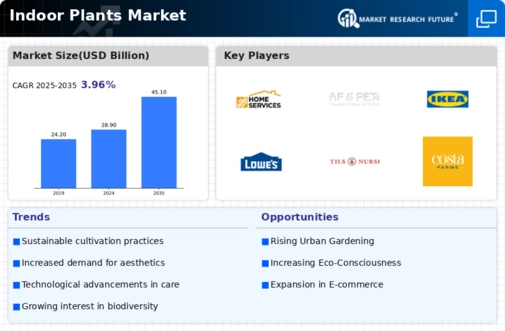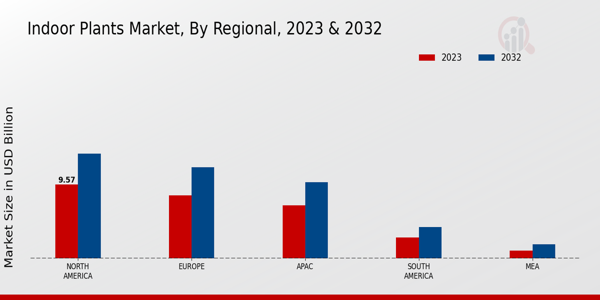Rising Urbanization
The Global Indoor Plants Market Industry experiences a notable boost due to increasing urbanization. As more individuals migrate to urban areas, the demand for indoor plants rises, driven by the need to enhance living spaces. Urban dwellers often seek to create a calming environment amidst the hustle and bustle of city life. This trend is reflected in the projected market value of 28.9 USD Billion in 2024, indicating a growing appreciation for greenery in homes and offices. Furthermore, urbanization contributes to a shift in lifestyle preferences, where individuals prioritize wellness and aesthetics, further propelling the indoor plants market.
Market Growth Charts
Diverse Product Offerings
The Global Indoor Plants Market Industry benefits from a wide array of product offerings that cater to various consumer preferences. Retailers are increasingly providing diverse plant species, decorative pots, and care accessories, appealing to both novice and experienced plant owners. This variety allows consumers to personalize their indoor spaces, enhancing the overall aesthetic appeal. Additionally, the rise of online shopping platforms facilitates access to these products, broadening market reach. As consumers seek unique and stylish options for indoor plants, the industry is poised for continued growth, adapting to evolving tastes and preferences.
Health and Wellness Trends
The Global Indoor Plants Market Industry is significantly influenced by the growing focus on health and wellness. Indoor plants are recognized for their ability to improve air quality, reduce stress, and enhance overall well-being. As consumers become more health-conscious, they increasingly incorporate plants into their living and working environments. This trend is supported by studies indicating that indoor plants can reduce indoor pollutants, thereby fostering a healthier atmosphere. The market is expected to grow, reaching 45.1 USD Billion by 2035, as more individuals recognize the psychological and physical benefits of surrounding themselves with nature.
Sustainable Living Practices
Sustainability is a driving force in the Global Indoor Plants Market Industry, as consumers increasingly adopt eco-friendly practices. The desire to reduce carbon footprints and promote biodiversity encourages individuals to incorporate indoor plants into their homes. This trend aligns with global initiatives aimed at environmental conservation. As a result, the market is likely to see a steady growth rate, with a projected CAGR of 4.12% from 2025 to 2035. The integration of sustainable practices in plant care, such as organic fertilizers and water conservation techniques, further enhances the appeal of indoor plants, making them a preferred choice for environmentally conscious consumers.
Technological Advancements in Horticulture
Technological innovations play a crucial role in shaping the Global Indoor Plants Market Industry. Advances in horticultural technology, such as smart gardening systems and automated care solutions, make it easier for consumers to maintain indoor plants. These technologies cater to a growing demographic of plant enthusiasts who may lack the time or expertise to care for plants traditionally. The introduction of apps that provide care tips and reminders enhances user engagement and satisfaction. As these technologies become more accessible, they are likely to attract a broader audience, further driving market growth and expanding the consumer base.














